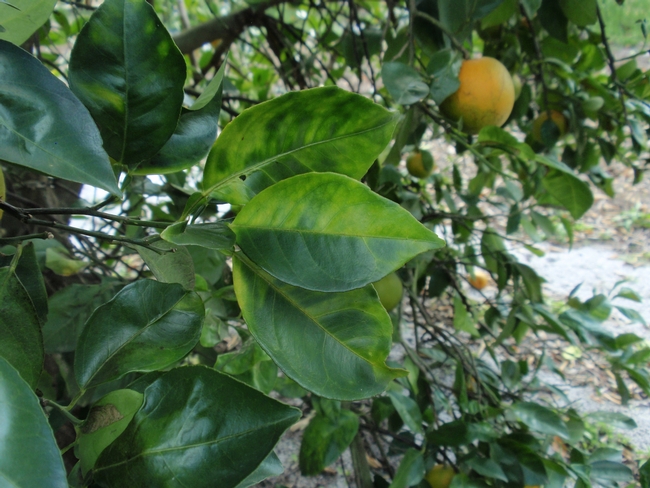Citrus industry, UC Riverside and UCCE team up to fight a citrus killer
On June 6, citrus industry, university and government leaders gathered at UC Riverside Citrus Variety Collection to announce a joint effort to fight huanglongbing (HLB), also known as citrus greening disease. Huanglongbing is a bacterial plant disease fatal to citrus trees
The effort will result in construction of a biosafety-level 3 plant facility in Riverside, about two miles north of UC Riverside.
The biosafety-level 3 plant facility will allow researchers, including many from UC Riverside who are experts on citrus pests, diseases and breeding, to conduct work with plant pathogens that previously couldn't be done in Southern California. (There is only one other such facility in California – at UC Davis.)
The new biosafety-level 3 building will be built and owned by the California Citrus Research Foundation, which is funded by citrus growers.
At the June 6 gathering, Kim Wilcox, chancellor of the UC Riverside, spoke about the establishment in 1907 of the Citrus Experiment Station in Riverside. That research station eventually grew into UC Riverside. He noted that the research station received a boost after a 1913 freeze that devastated the citrus industry.
“Now, unfortunately, 100 years later, we have a different kind of natural threat, Wilcox said. “It's not weather in this case but an insect. And again the university, the federal government and private partners have come together and said ‘We can address this.'”
Georgios Vidalakis and Mark Hoddle are two UC Cooperative Extension specialists based at UC Riverside who will benefit from the facility.
Vidalakis is a UCCE specialist in plant pathology and director of the Citrus Clonal Protection Program at UC Riverside. The program provides a safe mechanism for the introduction into California of citrus varieties from around the world.
“Having access to live plants that carry the bacteria is very, very important to our program because it allows us to develop and validate diagnostic techniques much more quickly,” Vidalakis said.
Vidalkis has ongoing projects at the biosafety-level 3 plant facility in Davis as well as one in Maryland. Having his experimental material hundreds or thousands of miles away is a difficult, costly and inefficient way to conduct science, he said.
“This new facility in Riverside will help tremendously in the fight against HLB,” he said. “It is also a great investment for future threats to the California citrus industry.”
Hoddle is a UCCE specialist in entomology and director of Center for Invasive Species Research at UC Riverside. In recent years, Hoddle has released two species of wasps native to Pakistan that are natural enemies of the Asian citrus psyllid, the vector of a bacterium that causes HLB.
Hoddle called the biosafety facility a critical resource for righting HLB that will greatly assist UC Riverside researchers.
“This investment will likely allow more rapid and cost effect progress in developing mitigation strategies and novel technologies for managing HLB in California's iconic citrus crop,” Hoddle said.


